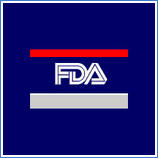Here's new about a recent Warning Letter issued by the FDA to Standard Homeopathic Company,
The Warning Letter to your company on April 29, 2011 discussed primarily current good manufacturing practices (cGMPs) and only a small sample of your firm’s misbranded drugs. In the 2011 warning letter and in subsequent communications with your firm, the Food and Drug Administration (FDA or Agency) has repeatedly reminded your firm to take a broad approach to your labeling and review the indications for all your products. In May 2013, FDA conducted a more detailed review of your labeling and marketing information for your firm’s homeopathic drug products found on your website at http://www.hylands.com. FDA also reviewed your website www.hylandsearache.com in September 2013. This review revealed that your firm markets numerous drugs that are misbranded in violation of sections 503 and 301 of the Federal Food, Drug, and Cosmetic Act (FD&C Act) [21 U.S.C. §§ 353 and 331] including, but not limited to: “Arnicaid,” “Arthritis Pain Formula,” “Earache Tablets,” “Earache Drops,” “Infant Earache Drops,” “Hyland’s Kid’s Kit,” “Restful Legs,” “Teething Tablets,” “Teething Gel,” “Vaginitis,” “Antimonium Tartaricum,” “Arsenicum Album,” “Belladonna,” “Bryonia Alba,” “Cell Salts: #4 Ferrum Phos, #6 Kali Phos, #7 Kali Sulph, #8 Mag Phos, #11 Nat Sulph, #12 Silica,” “Chamomilla,” “Ferrum Phosphoricum” “Hepar Sulphuris Calcareum” “Hypericum Perfoliatum,” “Ipecacuanha,” “Magnesia Phosphorica,” “Mercurius Vivus,” “Nux Vomica,” “Phosphorus,” “Ruta Graveolens,” and “Spongia Tosta.”
Misbranding [§§ 503(b)(4) and 301(a)]
As stated above, FDA reviewed the information on your websites regarding a number of your products. Information on your websites, including the indications associated with each active ingredient, documents the intended uses of your products including, but not limited to the following:
Arnicaid
“Hypericum Perfoliatum 6X HPUS – for nerve injuries due to blows.”
Arthritis Pain Formula
“Guaiacum 3X HPUS –acute rheumatism, stiffness and immobility.”
Earache Tablets
The name of product indicates the intended use for earaches.
“For the relief of symptoms of fever, pain, irritability and sleeplessness associated with earaches in children after diagnosis by a physician.”
“The medicines in Hyland’s Earache Tablets have been clinically shown to reduce earache symptoms during the first 48 hours of the episode.”
Take these at the first sign of ‘clogging’ or ear discomfort. They work fast and usually clear symptoms within 24-48 hours. They really do k/o the pain and the all natural ingredients are better, in my opinion, than over prescribing antibiotics for repeat infections. I find them especially helpful for adult ear infections for those of us in tropical or warm climates. A must for chronic otitis externa sufferers.” (consumer review from www.hylandsearache.com)
“Calcarea Carbonica 30C HPUS - for throbbing, pulsing pain in ears.”
“Sulphur 30C HPUS: for ear pain with burning sensation.”
Earache Drops
The name of product indicates the intended use for earaches.
“For the relief of symptoms of fever, pain, irritability and sleeplessness associated with earaches in children after diagnosis by a physician.”
“Unlike conventional swimmer's ear treatments that simply dry the ears, Hyland's Earache Drops work directly to relieve the pain, itch, and congestion associated with swimmer's ear.”
“These drops cleared up my painful swimmers ear within hours! I thought I might even been having a brain tumor, as I was truly suffering and trying to see my doctor on on (sic) a summer Saturday when his office is closed, and was on verge of going to the ER. Inner ear infections can lead to horrible consequences, like permanent loss of balance! Lucky for me I found these drops at a Store on Sixth Avenue. I was skeptical at the high price. But I was in so much pain, and had already tried peroxide, ear wax removal product, and heating pad while all escalated the pain and inner ear swelling. Maybe it was a brain tumor afterall?” (consumer review from www.hylandsearache.com)
“Calcarea Carbonica 30C HPUS - for throbbing, pulsing pain in ears.”
“Sulphur 30C HPUS: for ear pain with burning sensation.”
Read more here: http://www.fda.gov/ICECI/EnforcementActions/WarningLetters/2013/ucm370015.htm






